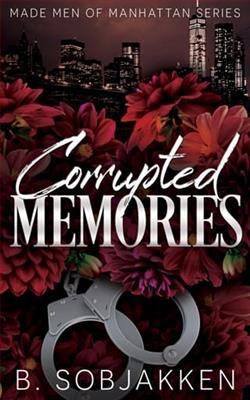Page 55 of Lunar Park
“So, this Mr. Lawrence . . . was black?”
After another pause, Kimball nodded. “He also had a dog. A small mutt that the assailant also attacked.” He glanced down at his notebook again. “The assailant broke the dog’s two front legs.”
I did not want it to, but the point of Kimball’s visit was becoming clearer to me.
“Mr. Lawrence also had a history of mental illness and had been institutionalized various times, and since Midland County doesn’t have a large black community, the theory that this crime was racially motivated didn’t really play out. And the case remains unsolved.” Kimball paused. “But, again, there was something about it that kept bothering me. It seemed like I had read about this case before. And”—Kimball opened the copy of my book that sat in his lap—“on pages one thirty-one and one thirty-two in American Psycho—”
“A black homeless man was blinded.” I murmured this to myself.
Kimball nodded. “And he had a dog that Patrick Bateman broke the legs of.” He glanced again at his notebook and continued. “In July, a Sandy Wu, a delivery boy for a Chinese restaurant in Brigham, was murdered. Like Mr. Rabin, his throat was slashed.”
I sat up. “Did . . . he have a dog?”
Kimball shifted uncomfortably and frowned, giving off the vibe that he did not think we were on the same track. But that wasn’t true. I just wanted to prolong the inevitable.
“Um, no, he did not have a dog, but there was a detail that again took me back to American Psycho.” Kimball pulled something from the notebook and reached forward to give it to me: a receipt from a restaurant called Ming’s, encased tightly in a plastic slip. The receipt was wrinkled and—now I swallowed—spattered lightly with brown flecks. On the other side, scrawled in ink, were the words I’m gonna get you too . . . bitch.
Kimball paused after I handed the slip back to him.
“This particular order was being delivered to the Rubinstein family.”
Kimball waited for my reaction, which wasn’t forthcoming.
“On pages one eighty and one eighty-one a delivery boy is killed in the same manner as Mr. Wu and, as in the book, the assailant wrote the identical message that Patrick Bateman does on the back of the receipt.”
I closed my eyes and then tried to open them when I heard Kimball sighing.
“We—well, actually just me at that point—backtracked to another unsolved case involving a Victoria Bell, an elderly woman who lived on Outer Circle Drive.” Kimball paused. “She was decapitated.”
I knew the name. A bolt of clarity shot through me when I realized where Kimball was going with this.
“There is a Victoria Bell in American Psycho—”
“Wait a minute, wait a minute, wait a minute—”
“—but this one was found in a motel off Route Fifty just outside Coleman about a year ago. She’d been stripped and placed in a bathtub and covered with lime.”
“Wait—she was covered with limes?” I exclaimed, recoiling.
“No, lime. It’s a dissolvent, Mr. Ellis.”
I closed my eyes again. I did not want to go back to that book. It had been about my father (his rage, his obsession with status, his loneliness), whom I had transformed into a fictional serial killer, and I was not about to put myself through that experience again—of revisiting either Robert Ellis or Patrick Bateman. I had moved past the casual carnage that was so prevalent in the books I’d conceived in my twenties, past the severed heads and the soup made of blood and the woman vaginally penetrated with her own rib. Exploring that kind of violence had been “interesting” and “exciting” and it was all “metaphorical” anyway—at least to me at that moment in my life, when I was young and pissed off and had not yet grasped my own mortality, a time when physical pain and real suffering held no meaning for me. I was “transgressive” and the book was really about “style” and there was no point now in reliving the crimes of Patrick Bateman and the horror they’d inspired. Sitting in my office in front of Kimball, I realized that at various times I had fantasized about this exact moment. This was the moment that detractors of the book had warned me about: if anything happened to anyone as a result of the publication of this novel, Bret Easton Ellis was to blame. Gloria Steinem had reiterated this over and over to Larry King in the winter of 1991 and that’s why the National Organization for Women had boycotted the book. (In a small world filled with black ironies, Ms. Steinem eventually married David Bale, the father of the actor who played Patrick Bateman in the movie.) I thought the idea was laughable—that there was no one as insane and vicious as this fictional character out there in the real world. Besides, Patrick Bateman was a notoriously unreliable narrator, and if you actually read the book you could come away doubting that these crimes had even occurred. There were large hints that they existed only in Bateman’s mind. The murders and torture were in fact fantasies fueled by his rage and fury about how life in America was structured and how this had—no matter the size of his wealth—trapped him. The fantasies were an escape. This was the book’s thesis. It was about society and manners and mores, and not about cutting up women. How could anyone who read the book not see this? Yet because of the severity of the outcry over the novel the fear that maybe it wasn’t such a laughable idea was never far away; always lurking was the worry about what might happen if the book fell into the wrong hands. Who knew, then, what it could inspire? And after the killings in Toronto it was no longer lurking—it was real, it existed, and it tortured me. But that had been more than ten years ago and a decade had passed without anything remotely similar happening. The book had made me wealthy and famous but I never wanted to touch it again. Now it all came rushing back, and I found myself in Patrick Bateman’s shoes: I felt like an unreliable narrator, even though I knew I wasn’t. Yet then I thought: Well, had he?











